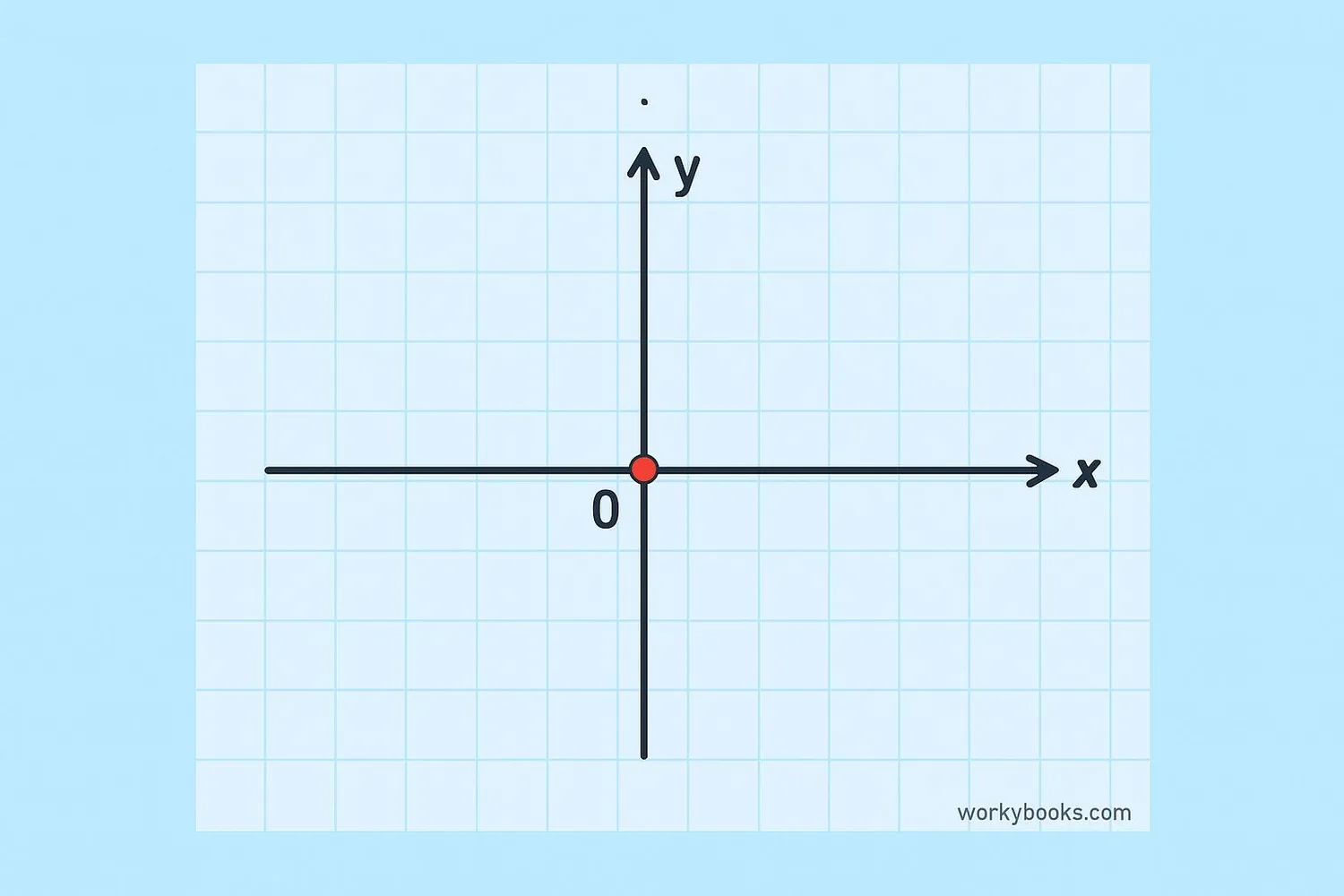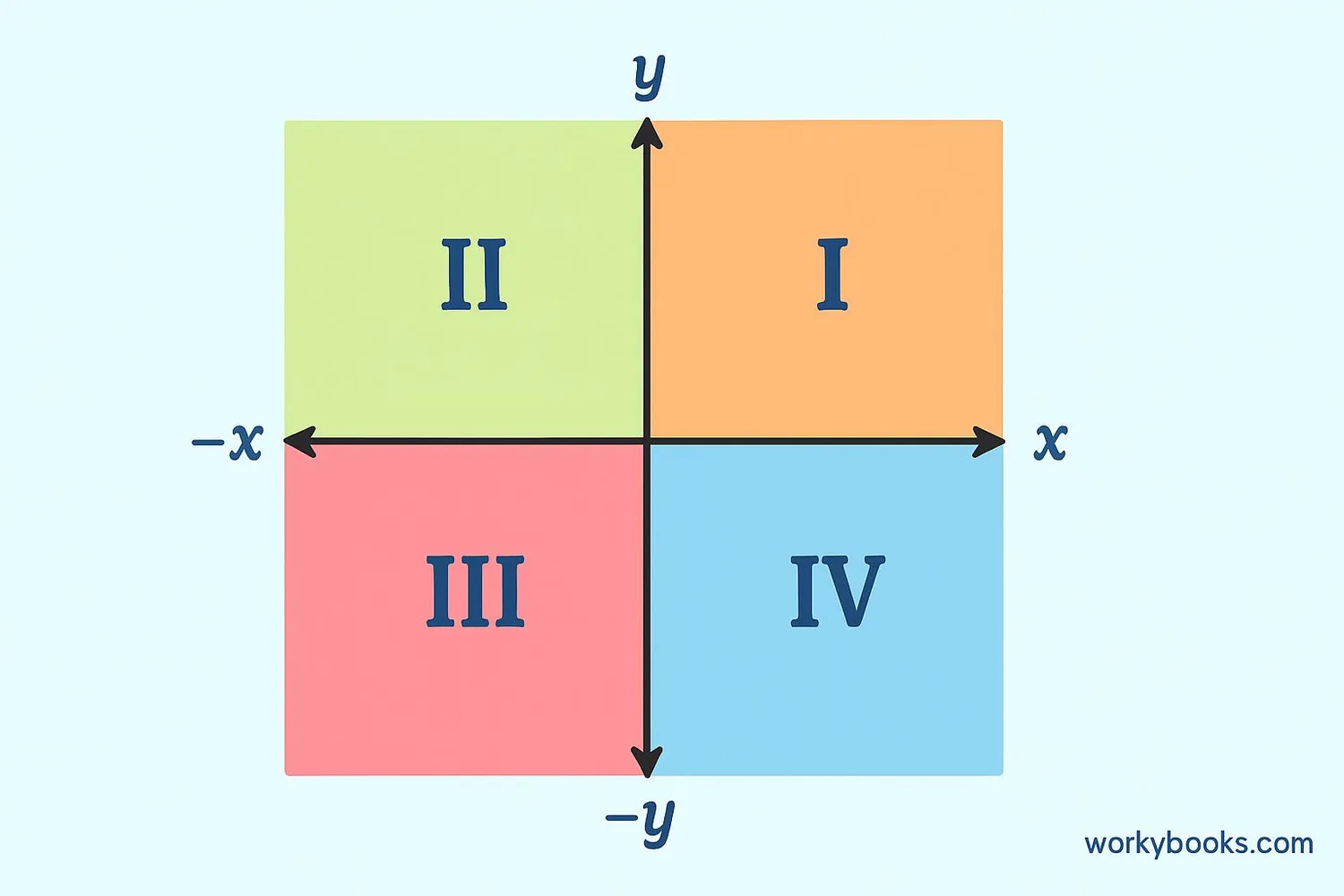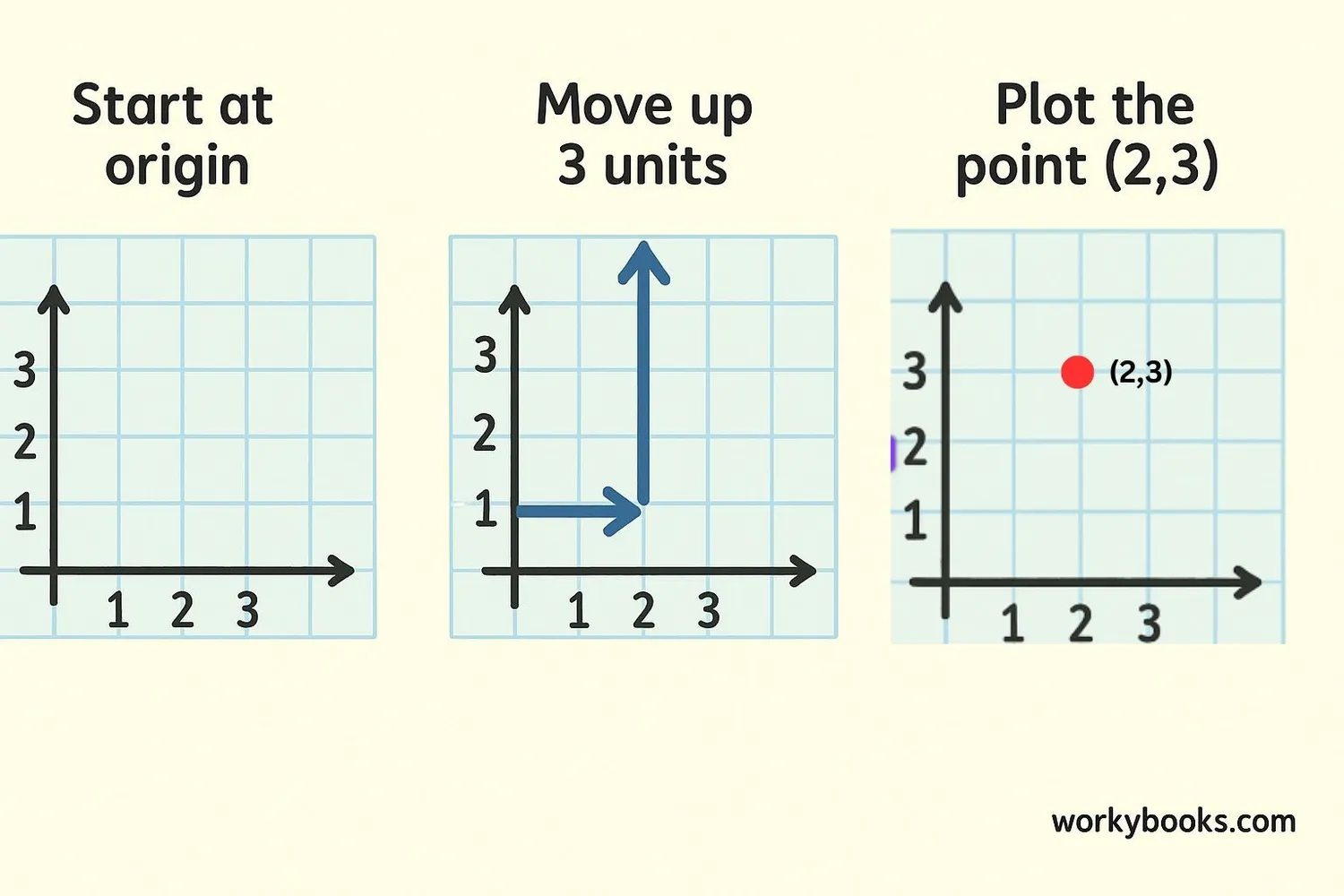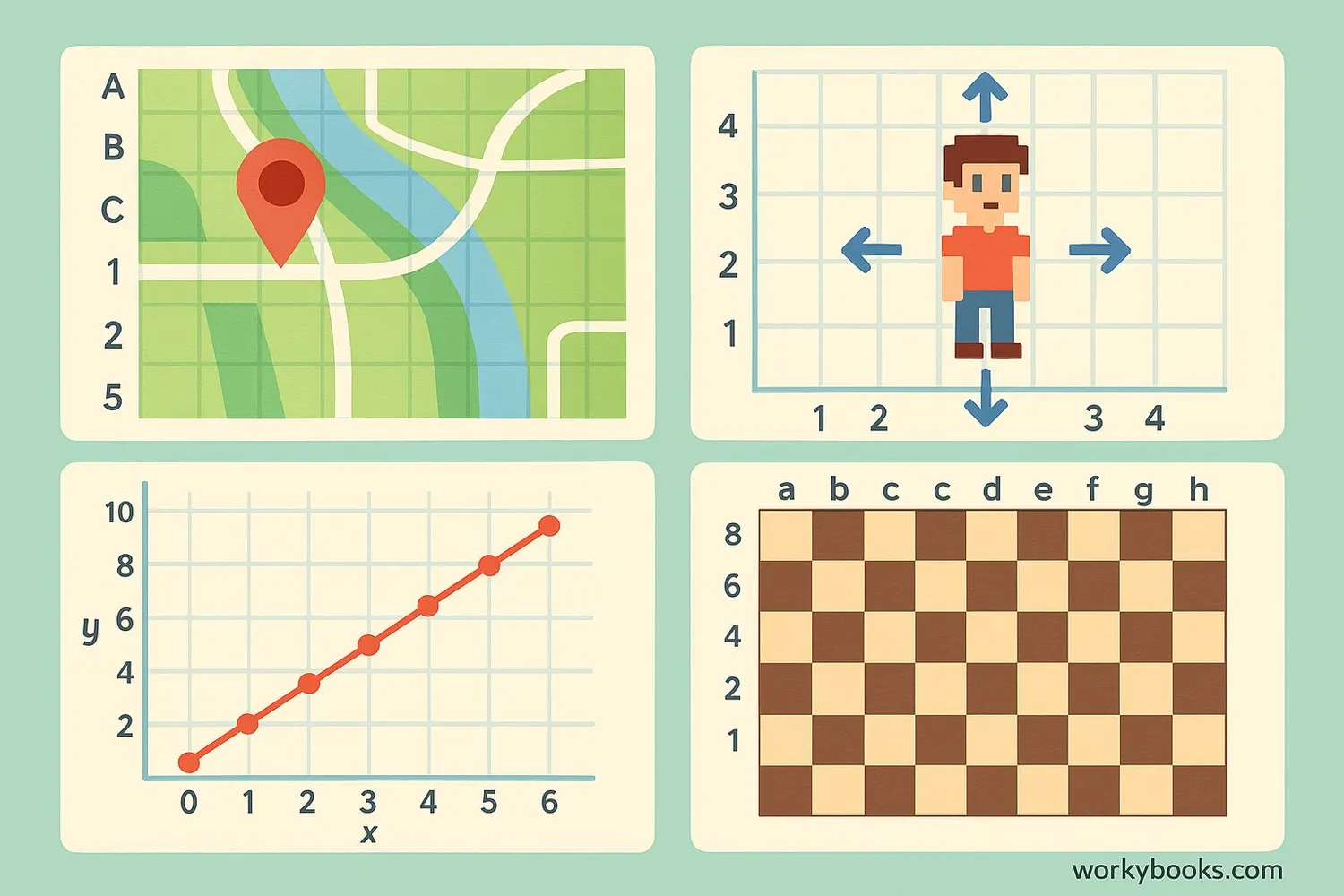Coordinate Plane - Definition, Examples, Quiz, FAQ, Trivia
Learn to graph points, understand quadrants, and master the Cartesian coordinate system
What is a Coordinate Plane?

A coordinate plane is a special grid that helps us describe the position of points using two numbers. It's like a map for mathematics! This grid has two number lines that cross each other at right angles:
• The horizontal number line is called the x-axis
• The vertical number line is called the y-axis
The point where the axes cross is called the origin and is labeled (0,0). The coordinate plane is also called the Cartesian plane after the mathematician René Descartes who invented it.
Using this system, we can describe any point on the plane with just two numbers called coordinates written as (x, y). The first number tells us how far to move horizontally, and the second number tells us how far to move vertically.
Key Concept
Coordinates are always written as (x, y) - the x-coordinate first, then the y-coordinate.
Parts of the Coordinate Plane

The coordinate plane has several important parts that help us understand how to locate points:
1. Axes:
• X-axis: The horizontal number line (left-right direction)
• Y-axis: The vertical number line (up-down direction)
2. Origin:
The point (0,0) where the x-axis and y-axis cross each other
3. Quadrants:
The two axes divide the plane into four regions called quadrants:
• Quadrant I: Top-right (both x and y positive)
• Quadrant II: Top-left (x negative, y positive)
• Quadrant III: Bottom-left (both x and y negative)
• Quadrant IV: Bottom-right (x positive, y negative)
4. Coordinates:
Ordered pairs (x, y) that describe a point's location:
• X-coordinate: Horizontal position (left-right)
• Y-coordinate: Vertical position (up-down)
Remember
Quadrants are numbered counterclockwise starting from the top-right as Quadrant I.
Graphing Coordinates

Graphing coordinates is like following treasure map instructions! Here's how to plot a point:
Step 1: Start at the origin (0,0)
Step 2: Move horizontally along the x-axis
• Move right for positive x-values
• Move left for negative x-values
Step 3: From that position, move vertically
• Move up for positive y-values
• Move down for negative y-values
Step 4: Place a point where you end up
Let's practice with (3, 2):
1. Start at (0,0)
2. Move 3 units right (x=3)
3. Move 2 units up (y=2)
4. Place your point at (3,2)
Now try (-2, 4):
1. Start at (0,0)
2. Move 2 units left (x=-2)
3. Move 4 units up (y=4)
4. Place your point at (-2,4)
Graphing Tip
Remember "Run then Jump" - run along the x-axis first, then jump up or down on the y-axis.
Coordinate Plane Examples

Coordinate planes are used in many real-world situations. Let's look at some examples:
Example 1: Treasure Map
A treasure is buried at (5, -3). Starting from the origin (the big oak tree), walk 5 steps east, then 3 steps south. Dig there!
Example 2: City Grid
Your school is at (2, 4) and the library is at (-1, 3). To get from school to library, move 3 blocks west (x from 2 to -1) and 1 block south (y from 4 to 3).
Example 3: Video Games
In many games, characters move on a coordinate grid. A character at (7, 2) moves to (7, 5) by moving 3 units up without changing left/right position.
Example 4: Science Graphs
Scientists use coordinate planes to show relationships. For example, a graph showing plant growth might have days on the x-axis and height on the y-axis.
Practice plotting these points:
• (4, 1) - Quadrant I
• (-3, 2) - Quadrant II
• (-2, -4) - Quadrant III
• (5, -2) - Quadrant IV
Real-World Application
GPS systems use coordinate planes to pinpoint locations on Earth with latitude and longitude!
Coordinate Plane Quiz
Test your knowledge with this 5-question quiz about coordinate planes:
Frequently Asked Questions
Here are answers to common questions about coordinate planes:
Math Trivia
Discover interesting facts about coordinate planes and mathematics:
Descartes' Discovery
René Descartes got the idea for the coordinate plane while watching a fly on his ceiling. He realized he could describe the fly's position using distances from two walls.
GPS Coordinates
The entire Earth is mapped using a coordinate system similar to the Cartesian plane, with latitude and longitude instead of x and y coordinates.
Chess Coordinates
Chess boards use a coordinate system where each square has a letter and number. This helps players record and analyze games using algebraic notation.
3D Coordinate Systems
Coordinate planes can extend to three dimensions with an added z-axis. This allows us to locate points in space, which is essential for computer graphics and physics.





